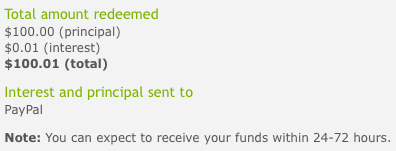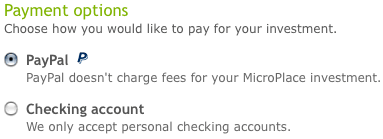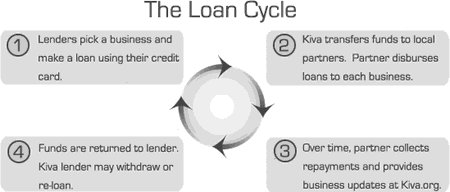 Just got an e-mail from MicroPlace that they are running a gift certificate promotion where if you buy a $20 GC, you get another $20 GC free. The gift recipient can then lend out the money to a poor entrepreneur and receive interest + $20 back later. Since the person actually gets the money back (or at least most of it assuming some defaults), and thus isn’t the same as a “$XX has been donated in your name” gift, I think it’s a cool twist on gift cards.
Just got an e-mail from MicroPlace that they are running a gift certificate promotion where if you buy a $20 GC, you get another $20 GC free. The gift recipient can then lend out the money to a poor entrepreneur and receive interest + $20 back later. Since the person actually gets the money back (or at least most of it assuming some defaults), and thus isn’t the same as a “$XX has been donated in your name” gift, I think it’s a cool twist on gift cards.
Give a Gift that Keeps on Giving
Give a unique and special gift this holiday season. It is a gift of connection, a gift of hope, and a gift that believes that poor people can use their ingenuity and hard work to break out of the cycle of poverty.Your gift can help fund loans to poor people who could start a business, save, and work their way out of poverty. And when you purchase a gift certificate of $20 or more on MicroPlace, we’ll give you a free gift certificate of $20 to send to someone else on your shopping list!
To learn more about Microplace check out these posts, including my last microlending update.
 MicroPlace
MicroPlace Kiva
Kiva




 Before we move, we are planning to donate a ton of extra things like clothing, kitchen appliances, and books. Since this might be the first year ever that we can deduct charitable donations from our taxes (yay!), I wanted to check in what documentation I needed to obtain. Apparently, the government thinks too many people have been inflating the values of their old sweaters and other creative deductions:
Before we move, we are planning to donate a ton of extra things like clothing, kitchen appliances, and books. Since this might be the first year ever that we can deduct charitable donations from our taxes (yay!), I wanted to check in what documentation I needed to obtain. Apparently, the government thinks too many people have been inflating the values of their old sweaters and other creative deductions: I’ve
I’ve 
 Here’s my favorite loan so far:
Here’s my favorite loan so far:
 The Best Credit Card Bonus Offers – 2025
The Best Credit Card Bonus Offers – 2025 Big List of Free Stocks from Brokerage Apps
Big List of Free Stocks from Brokerage Apps Best Interest Rates on Cash - 2025
Best Interest Rates on Cash - 2025 Free Credit Scores x 3 + Free Credit Monitoring
Free Credit Scores x 3 + Free Credit Monitoring Best No Fee 0% APR Balance Transfer Offers
Best No Fee 0% APR Balance Transfer Offers Little-Known Cellular Data Plans That Can Save Big Money
Little-Known Cellular Data Plans That Can Save Big Money How To Haggle Your Cable or Direct TV Bill
How To Haggle Your Cable or Direct TV Bill Big List of Free Consumer Data Reports (Credit, Rent, Work)
Big List of Free Consumer Data Reports (Credit, Rent, Work)